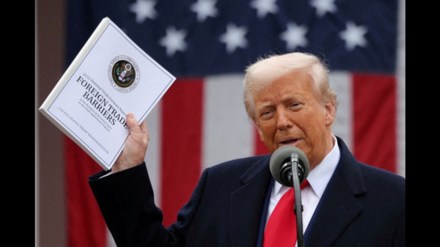By Bipin Sapra
The US is reshaping global trade dynamics with the imposition of reciprocal tariffs on its trading partners. While the initial impact may be discouraging, there is optimism that market adjustments and strategic adaptations will help absorb the shock over the medium to long term, explains Bipin Sapra
What are the sectors that will be hit the most?
In recent years, the United States has emerged as one of India’s largest trading partners and remains the top destination for Indian exports. The reciprocal tariffs imposed by US, effective April 5, 2025 (in a phased manner with 10% additional levy till April 9, 2025 and thereafter 27%), pose an immediate challenge for Indian exporters, potentially disrupting trade flows and profit margins in the short term. This sweeping move marks a sharp departure from the earlier Most Favoured Nation rates, which ranged between 1% and 10%, significantly raises costs for Indian exporters.
Several key industries, including textiles & apparel, leather & footwear, base metals, toys, paper & packaging, are among the hardest hit by the reciprocal tariffs. These sectors, which relied on the US as their primary export market, now face a steep increase in duties. This sharp escalation is expected to drive up costs significantly. On the other hand,sectors such as agriculture, chemicals, etc., where share of exports to the US is much lower will recover from the impact in the long run.
Products in the Indian agriculture sector that will feel the heat
Despite accounting for a smaller share of India’s total exports to the US, agriculture remains a critical concern in India with the majority of the population employed in this sector. Given this huge employment number, even a small tariff incidence on agriculture exports will create a much larger impact on the economy.
Agriculture, for long, has been a contentious issue in US-India trade relations; agriculture has seen both nations firmly uphold their positions—Washington criticising India’s high tariffs and restricted market access, while New Delhi prioritises its domestic farming sector through protectionist measures. Some of the agricultural products which will be heavily impacted by the revised tariff structure announced by the Trump administration on Thursday include vegetables, honey, rice, prawns, shrimps and essential oils — items that previously faced minimal duties of 1% to 10% or even enjoyed complete exemption from tariffs.
Opportunities in supply chain rejig
While the reciprocal tariffs imposed by the US may create initial disruptions, they also offer a chance for India to reassess its trade dynamics and strengthen its global positioning. Key sectors such as semiconductors, pharma, and chemicals have been granted exemptions under Annexure II, helping mitigate the overall impact.
Moreover, India has been granted tariff advantage over China (34%), Vietnam (46%), Indonesia (32%), Taiwan (32%), and Bangladesh (37%) which are facing even higher tariff barriers. In textiles, India fares better than Bangladesh and Vietnam which are amongst the top exporters to the US. Therefore, rather than viewing it solely as a setback, India can leverage this moment to enhance trade negotiations, foster self-reliance in affected sectors, and build deeper economic resilience in the evolving global landscape.
However, when looking at Mexico and Canada, the comparative picture is not very favourable for India. The reciprocal tariff announcements do not mention them.
What Indian govt & businesses can do
The policy shift presents short-term challenges, but it offers an opportunity for Indian industries to explore new market strategies, value-chain optimisations and trade diversifications. As global markets respond to this protectionist stance, India must proactively navigate both the challenges and opportunities that arise. While businesses await favourable outcomes from diplomatic discussions, immediate action is essential to protect trade interests and ensure economic stability. Some of the economic strategies that can be adopted in the short run include rationalising custom duties on key imports from the US, expanding the Make-in-India and Production Linked Incentives (PLI) schemes to boost domestic manufacturing, reduce import dependencies, and enhance global competitiveness. By driving investment, technology adoption, and scale-driven efficiencies, India can position itself as a global manufacturing hub, attracting companies seeking supply chain diversification.
Focus turns to India-US bilateral pact
A key priority now is crafting a comprehensive India-US bilateral trade agreement to establish a more predictable and balanced trade framework. Simultaneously, India must accelerate efforts to negotiate new Free Trade Agreements (FTAs) with key global partners while strengthening existing ones to diversify export markets and reduce dependency on any single trade corridor.
A targeted tariff review on strategic imports, along with sector-specific diplomatic negotiations, will further bolster resilience. These measures will not only mitigate short-term disruptions but also reinforce India’s long-term trade ambitions, aligning with the “Mission 500” vision to elevate India-US trade to $500 billion by 2030.
The writer is tax partner, EY India.
Disclaimer: Views expressed are personal and do not reflect the official position or policy of FinancialExpress.com. Reproducing this content without permission is prohibited.
